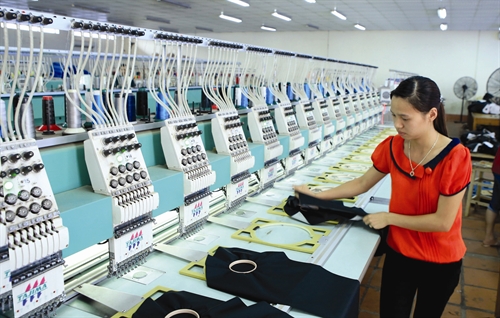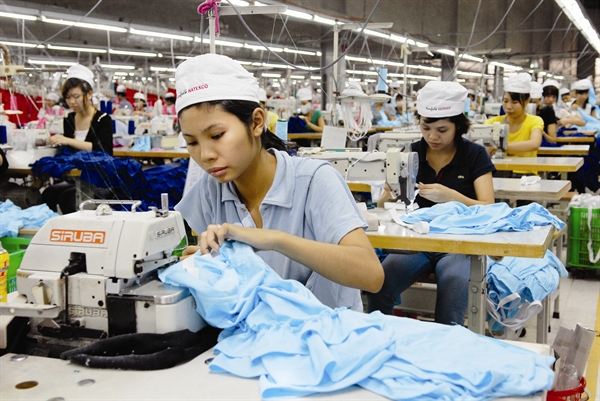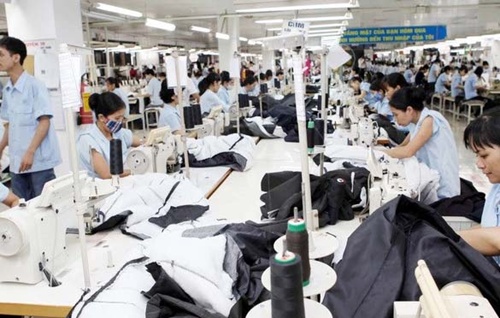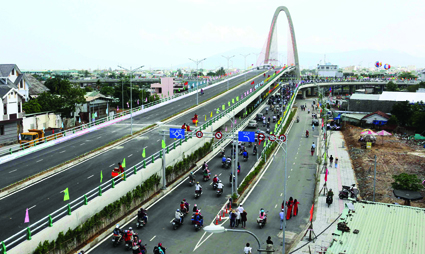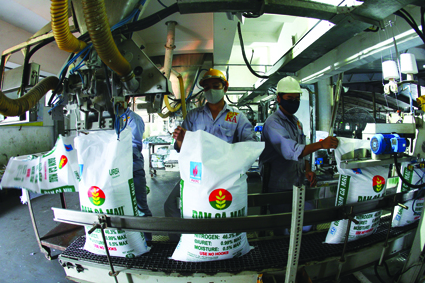The Ministry of Science and Technology has recently issued new regulations on identification of industrial property infringements on the Internet.
These regulations make up an important part of Circular No. 11/2015/TT-BKHCN (the Circular) guiding the implementation of Government Decree No. 99/2013/ND-CP on sanctioning of administrative violations in the field of intellectual property (IP).
The Circular took effect on August 11, replacing Circular No. 37/2011/TT-BKHCN.
According to the new regulations, an organization or individual will be regarded as having committed acts of unfair competition in the IP sector if failing into either of the following two cases:
(i) using a Vietnam’s national domain name “.vn” with a row of characters identical or confusingly similar to a protected or well-known trademark, trade name or geographical indication to advertise or introduce an identical or similar product or service on a website which such domain name directs to, thus causing spiritual or material damage to the lawful owner of such trademark, trade name or geographical indication; and
(ii) registering or appropriating the right to use a Vietnamese domain name “.vn” with a row of characters identical to a prestigious and well-known trademark, trade name or geographical indication in Vietnam with a view to selling such domain name to others to seek profits or obstructing the owner of such trademark, trade name or geographical indication in registering the domain name relevant to such trademark, trade name or geographical indication.
The regulations go on to instruct what lawful rights holders need to do to request competent authorities to handle infringers.
In the first case, the right holder must prove that he has widely and stably used the trademark, trade name or geographical indication and has been widely known in the country as the holder of IP rights over, as well as owner of goods and services bearing, such trademark, trade name or geographical indication. And he should also substantiate that the infringer has used the violating domain name to advertise, introduce or sell identical, similar or related goods or services and caused spiritual or material damage to his business and keeps using such domain name despite being asked to stop using it. In this case, the rights holder may use revenue figures and number of products sold, advertisement and marketing information, public assessment, consumer voting results, etc. as proof of his prestige and reputation.
In the second case, the right holder must prove that the infringer has registered the domain name but, instead of using it, tried to sell it to seek profits or obstruct the lawful rights holder of the domain name to register it.
In the world today, with the advent of digital technology, the Internet has actually become a great element that changes the way we live, think and work. The control and possession of the right to administer an appropriate domain name provide a major advantage for its holder. For that reason, the number domain name disputes has been on the rise in Vietnam over the past years.
An illustration of this problem is the dispute over the domain name ibm.com.vn between Gia Hao Informatics Ltd., a local company, and IMB Vietnam, the branch of International Business Machines (IBM) - a well-known American corporation.
In fact, the dispute started more than 10 years ago. In 2003, Gia Hao filed a request for registration of the domain name ibm.com.vn. The Vietnam Internet Network Information Center (VNNIC), the national domain name registry, in a cautious move, put the domain name on the list of disputable ones and, concurrently recommended IMB Vietnam to register that domain name. Past the notified deadline, as IMB Vietnam failed to reply, VNNIC granted the domain name to Gia Hao. A few days later, IBM Vietnam filed a complaint with VNNIC, claiming that no one but IBM was entitled to register for this domain name. Gia Hao, in its turn, explained that “ibm” was the abbreviation of “intelligent business management” and, therefore, had no connection with the American corporation’s brand. It was not to mention that Gia Hao traded in security cameras and anti-theft devices and, therefore, could not be regarded as a rival of IBM Vietnam.
Until now, there appears no end in sight for the dispute.
The issuance of the Circular nearly two years after Decree No. 99 came into force also aims to specify some other provisions of Decree No. 99, thus facilitating compliance and enforcement activities.
Under Decree No. 99, in addition to principal penalties, IP infringes also face additional sanctions and remedial measures, depending on the nature and severity of their infringements.
Additional sanctions include confiscation of exhibits and means of infringement; deprivation of the right to use IP representation practice certificates, assessor cards, and certificates of qualification for provision of assessment services; and suspension of production and trading of infringing products and services.
Now, the Circular makes it clear that confiscation of exhibits and means of violation will only be additionally applied to deliberate violations in case it is necessary to ward off subsequent infringements or protect the exhibits and means of violation from destruction or dispersal, or when it is impossible to identify infringers.
The Circular also guides the application of remedial measures to IP infringement cases, including removal of infringing elements, destruction of material evidence and repayment of illicit profits.
The measure of forcible removal of infringing elements will apply in case the exhibits or means of violation are products, goods, signboards, means of business, or transaction documents that bear IP-infringing signs or misleading commercial indications. Ways of removal include detachment, disassembly, cut-off, erasure, abrasion or other appropriate measures.
Meanwhile, goods bearing counterfeit marks or geographical indications and materials, supplies and means used mainly for the production or trading of such products; stamps, labels and items bearing counterfeit marks or geographical indications or infringing elements; unusable goods; goods harmful to human health, animals, plants and the environment; goods bearing infringing elements which cannot be removed, will be destroyed. The measure of destruction will also be applied in case other handling measures cannot be implemented.
For a domain name-related infringement, the infringer will be forced to change domain name information or return the domain name if refusing to stop registering, appropriating the right to use, or using the infringing domain name while failing to reach an agreement with the lawful owner of such domain name.
In case of enterprise name infringements, the infringer who continues using the infringing enterprise name or fails to change it according to the business registration office’s notification or the agreement between involved parties will be compelled to change the infringing name and remove infringing elements from such name.
At the time a violation is detected, should invoices and vouchers related to the violation and infringing goods be found, the violator will be forced to repay illegal profits earned from the violation.
Violators must pay all expenses for taking remedial actions, the Circular says.-(VLLF)
